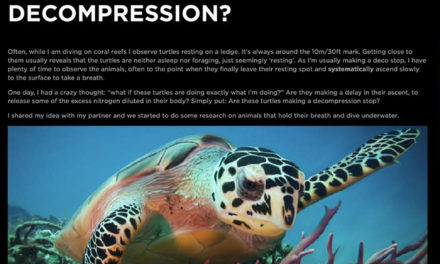What is the best underwater camera?
Welcome to Liquid Motion
my name is Guy Chaumette.
People keep asking me the same question:
What is the best underwater camera?
What is the best underwater camera?
And the best answer is: it depends what you want to do with it:-)
Are you interested in underwater photography or filming?
Do you think of yourself as a casual user, maybe
a passionate hobbyist or a professional underwater videographer?
Do you want to obtain or upgrade your underwater housing or underwater camera equipment?
Today,
I am going to help you navigate the numerous,
highly confusing choices and options,
so you can make a good, informed decision,
when buying underwater photo and video gear.
Firstly,
when looking at buying new underwater camera equipment,
You need to define your budget.
Shooting underwater is an expensive occupation.
Therefore, Getting the wrong equipment can make it even more expensive.
Lighting is crucial for underwater cameras
Secondly you should look into the lighting.
If you are just starting out in underwater videography
or photography,
and therefor have no equipment yet,
then you should start by choosing the video lights
or If you are shooting stills,
select a pair of good strobes.
In short the Lighting is crucial to shooting underwater
and the lighting requirements are the same
regardless of the camera you will be using.
Therefor do not choose some small lights or strobes just because you have a small camera.
Instead buy the very best lights or strobes
you can afford and they will last you for a very long time.
As a result, you will be able to get the best picture out of your camera,
andyour lighting will be relevant even if later
you upgrade your camera
and housing.
Remember that Underwater lighting is expensive,
therefore it is crucial to pick the right lights
or strobes
from the beginning.
You need minimum 2 video lights or 2 strobes
Further more Having 2 sources of light is also crucial
to control your lighting.
For example A good pair of video lights will cost close to $2500 with the supporting arms.
On the other hand, A good pair of strobes will cost close to $1600 with supporting arms
In conclusion, put the money on the side and then what is left is your budget for the camera and housing.
Finally If you want to know more about underwater video lights,
You can have a look at a previous video
I made a on video lights.
You can find the link to it down below.
What to look for when buying strobes?
However, For the strobes, you need to look for the following:
Firstly is the Power: it is expressed in GN (stand for guide number) and a good underwater strobe will show a GN of 30 or more.
Secondly is the Battery capacity:
Because You want to do 2 dives with unlimited use of the strobes,
you want to have over 200 flash at full power, with 300 being really good.
Thirdly is the Angle coverage: you want large cover for wide angle shooting. 110 degree without diffuser is considered very good.
Moreover the Recycle time for the strobe to fire is important with 1 second being considered very good while 3 seconds is bad
Subsequently Size matter and you want some compact setup especially if you have a small camera.
In addition the weight is important in these days of airline weight restriction.
In the hope that it helps you, I have put a list of underwater photo and video equipment
that I recommend down below.
To clarify, in this list There are some affiliate link
that gives me a small commission if you purchase equipment
at no extra cost to you
In the hope to support the channel
so I can make more great content for you.
What type of camera would be good for me?
With the lights and strobes out of the way,
you can now think about how to choose the right type of camera for your needs.
How do you begin?
Well, first, ask yourself
“what it is that I want to achieve?”.
In other words, Do you want to use the camera only for underwater work?
But maybe you want to use the camera topside as well?
Do you want to do photography?
Or do you want to do filmmaking?
Do you want to vlog,
Or perhaps to make some youtube videos?
Maybe you are aiming for the commercial market?
Subsequently, Your goal will help you determine
the type of camera that will suit you best.
Action Camera
I have made 5 different sections to the cameras.
First come the action cameras like the notorious Gopro.
The key point of action camera is that They are fully automatic and have a fixed wide angle lens.
In other words, the only control you have is where you point it.
Equally important is that The action cameras are cheap,
and they have been designed to be taken
where other cameras would be too big or too heavy,
too impractical or too expensive…
In conclusion, the action camera is excellent
for achieving what it has been designed for
and It can also be used underwater
with relative success.
Furthermore
Lets keep in mind that they are performing way better for video
than for stills.
In conclusion,
if you just want to document your diving activities,
the action camera can be what you are looking for.
In the other hand if you wish to unleash your creativity,
you may want to look into camera that allow for manual settings,
So you can better control the image.
Point and shoot
Secondly come the point and shoot cameras.
To begin with,
the point and shoot are a bit more sophisticated than the action cameras,
and some of them allow for more serious work.
Most importantly you can change most of the settings,
from iris to shutter speed,
colour balance,
ISO or gain and sometimes even focus.
Adding to this,
You also have a zoom and most have access to macro.
Because of this, The point and shoot camera make nice footage underwater.
In essence The point and shoot camera is considered by many
as the entry level camera,
although they can be a lot more than that.
Point and Shoot cameras like the Lumix 10 start at around $500
and have some great reviews.
To be noted, Some of the point and shoot like the Olympus TG6 are even waterproof to shallow depth,
making them the perfect camera for snorkelers.
To summarise, If money,
size and weight are leading factors in your quest for a camera,
Coupled with your need to retain some possibilities for creativity,
the point and shoot can be an attractive solution.
Check the links below for my recommendation.
And remember to make absolutely sure
that you get a great lighting solution
to get the best images out of your point and shoot.
Mirrorless
Third choice are the mirrorless and the DSLRs:
First, lets take a look at mirrorless
If you are very serious about your photography or filmmaking The mirrorless cameras offer professional level cameras that are small and light,
and the price range is attractive.
At the present time, depending on the model,
their sensor goes from Microfourththird
all the way to full frame sensor.
With this in mind, remember that Smaller sensors mean that cheaper and lighter lenses are available.
DSLR
Second lets look at the DSLRs
Bigger, heavier and more expensive than the mirrorless,
the DSLR used to occupy the top market,
simply because of the full frame option.
Although this use to be true, it is no longer a great argument as you can get full frame sensor on a mirrorless.
With this in mind, using a dslr underwater is often a good option for people who already have their camera and lenses.
On the other hand, If you are starting from scratch, this is a lot of money to put into a system, which after all is not really adequate for filming.
DSLRs and mirrorless are not the best for underwater video
That is to say Both Mirrorless and DSLR are poor options for filming underwater in my opinion, simply because their design is originally made for still photography.
In other words, to make proper underwater video,
these cameras have the following short comings.
First you need an external monitor,
so you have a comfortable position while shooting.
Having to look at the onboard camera monitor or the viewfinder
means you need to be behind the camera
with you head level with the monitor.
This is far from ideal in many situations.
In addition,
the camera’s monitor is often too small to pull focus correctly underwater.
Adding an external monitor to these housing
makes the setup top heavy
which in turn create stability issues when shooting video underwater.
Beware of photo lenses for video
Secondly, it is important to realise that
the lenses you use for photography are often not good for film work
because of their iris.
The point often overlooked is that the iris is moving in increment,
often a third of a stop at the time.
And this is fine when shooting stills,
however
when shooting video
it is often required to change the aperture while filming.
Having a clicked iris makes the Incremental change in aperture visible on film
almost looking like flickering.
In spite of this, If you want to use mirrorless or DSLRs for filming,
I would strongly recommend you to get a cine lens –
Because these lenses have a de-clicked iris,
so you can pull the iris while filming
to get this smooth buttery exposure adjustment.
However please Check with the housing manufacturer
for lens compatibility
before committing to any system.
And finally,
mirrorless and DSLRs don’t have an internal ND filter –
a very important feature for making cinematic footage
and most importantly the biggest issue that I have
with mirrorless and DSLRs for shooting underwater video.
DSLRs and mirrorless are the best for underwater photography.
In conclusion, if your main interest is photography, mirrorless and DSLR are great options.
Consequently,
if you start from scratch,
looking at the mirrorless will save you some money
without compromising on quality and creativity.
Above all,
if your interest is underwater filmmaking,
you may want to look at cameras that are designed for video.
Ultimately if you interest goes from video to photography,
either mirrorless or DSLRS can be a good compromise.
Camcorders
Next in line are the video cameras. This section is for the videographers.
The video camera section can be split into 2 subsections:
The consumer cameras, often called camcorders, and the pro cameras.
First lets look into the camcorders:
For the most part,
These cameras are dedicated to videography.
The form factor is made for taking video.
Above all there are ready to shoot right out of the box.
A key point is having a de-clicked iris,
Furthermore they usually offer some onboard ND filters.
They are small in size,
low in weight and offer attractive pricing.
However they are usually not really designed
to be used in manual mode
and often the manual controls
are not very good or user friendly
because a lot of them rely on touch screens,
which are not a good option when using a housing.
It is also to be noted that they don’t make good stills.
Above all the issues are often the housing form factor,
which is often far from ideal because of the need to use the touch screen,
that leads to weird contraptions
of push button and articulated arms on the housing
to unable touching the screen in various places to change settings.
Pro video
Secondly lets look at the professional video cameras.
Often referred to ENG style camera – ENG stand for electronic new gathering
These cameras usually come complete with all bells and whistle.
That is to say that they are equipped with a great zoom lens,
monitor,
viewfinder, XLR input for pro audio equipment.
Most importantly, All the key settings are accessible
by dedicated buttons and switches, including sound control,
and they have onboard ND filters!
This is a major point if shooting underwater
and is a must for the type of work I do.
These are the types of cameras
I have used successfully for many years.
However, their sensor is often super 35 size, basically apsc size,
Which can feel a little small compare to full frame sensors.
Most importantly, the ergonomics are great,
their larger size allow for heat dissipation,
The battery bay is open allowing for larger battery size
And they dont have a limit on clip size like most of the mirrorless and dslr’s.
Subsequently, because of their shape,
Their housing are very stable
making a striking improvement
over the top heavy unstable mirrorless or dslr housing.
Cine camera
Finally comes the cine cameras.
These are big, heavy, expensive cameras
and their housings are also over sized
and also very expensive.
Their weight is also to be taken into account
The whole package is basically Over sized.
But, they deliver incredible quality and resolution.
In other words, This is what is needed for big productions
to match the topside equipment
used in motion pictures and advertisement.
Do you need a cine camera underwater?
Therefor the big question is,
Is it an overkill?
All things considered,
you can put the best cine lens
On the best camera,
in the best housing with the best port.
But yet, you are still going to have to shoot through the water
which has particles in suspension in it.
In conclusion,
cine kits are great
if you’re working on high paying gigs.
As the name indicates, they are designed for cinema works,
where money and the number of staff is not an issue.
It is the choice if you want to work in a professional environment
like advertising, big tv shows
or motion picture.
Cine camera on budget!
It is to be noted that if you have the budget
and want to film with cine camera as a single operator,
there are some smaller cine camera that makes them easier to handle.
Some cine cams like the canon C200 come in a smaller package that is good for a single operator, yet take cine lens and deliver outstanding picture quality.
Further more There are also solution for the BMPCC 4 and 6 K from Blackmagic that offer excellent cine camera with attractive pricing and size closer to a dslr.
In conclusion the cine camera are the top quality for video but a tad overpriced
The pro video camera are the best for video with semi limited budget
Mirrorless and DSLRs are best for photography and can make good video
Point and shoot offer video and photo in an affordable and small package and can produce great images.
Finally Action camera are for casual use or to use as a complement to more sophisticated cameras.
So which style of underwater camera is for me?
Now you know the different styles of camera. So how do you choose what style best suits your objective?
And your wallet!
First of all, is it your hobby or will it be your career?
What is your size and weight target?
The weight allocation given by airlines is often a deciding factor,
because most people will have to travel with the gear
to get to diving destinations.
Next – what type of diving will you be doing?
If you dive from a liveaboard,
you can get people to help you get the gear on site.
If diving solo from the shore,
you have to make your entry
and exit
on your own
while having a full scuba kit
and bailout tank
and carrying the filming gear including lights.
Are you strong enough to do this safely?
So you have you eyes on a specific type of camera
and now you need to pick the specific model.
What to look for
in a Camera for an underwater kit?
I would first look for
Easy, dedicated manual controls,
so the primary controls which are
iris, shutter, iso/gain, white balance,
focus and frame rate
have an on body control versus having to scroll through a menu.
Internal nd filters are a big plus feature if you are filming,
actually they are so important to me
that they are a deciding factor
when choosing a camera for underwater use.
Look for large batteries
that allow for a minimum of 2 hours plus of shooting time,
so you don’t have to open the housing on the boat in between dives.
Look for HDMI or SDI out
to connect the external monitor
or SDI to send a feed to the surface if shooting for a big production.
For filming try to get a de-clicked iris for smooth exposure control.
Before you buy the chosen camera and lens,
you need to check on the underwater housing options.
What to look for
when choosing an underwater housing?
First, you want to have all the manual controls on the housing.
You want a Dedicated white manual balance
like a one push of a button.
For video work,
look for Neutral density filters access,
which mean that the camera has internal ND filters.
You want an External monitor connection.
And you probably want a Vacuum system.
That said, keep in mind I have been shooting for well over 20 years
without a vacuum
and never flooded any camera,
but it is great to have it for peace of mind.
For filming, a Flip on internal filter holder and diopter holder is a must,
as are lots of anchoring points on the housing.
Easy access to memory cards and batteries are an important factor,
as you may need to open the housing briefly to change cards and battery.
If doing this on a boat,
you don’t want to have to dismantle the whole kit
and expose the camera too much.
Support for the View finder is not a deal breaker
but it’s great for macro work especially in shallow water
where ambient light is very high.
And I would preferably choose lots of options for counter weight placement
to trim the housing correctly
and options to fix attachments to the housing
and be able to place accessories on it.
Voila – Now you can make an informed decision when buying underwater gear for filming or photography.
Plan a photo or video course in your camera budget
There is one last step to successfully shooting underwater,
and that is a step often overlooked by newcomers.
I regularly see people investing thousands of dollars in equipment
and then they run the camera in auto,
and achieve poor results.
So in the budget for underwater filming or photography,
you should put some money on a side to get a course,
that will allow you to make a huge jump start
and seriously shorten your learning curve.
You can take one of these courses at liquidmotionacademy.com
We offer online courses and also courses on location in Cozumel.
A word of caution about video or photo courses offered by dive shops.
Lets take the example of a PADI shop offering these photo and video courses.
For a PADI instructor to give you a photo or video course,
all he has to do is send a letter to PADI stating he made 30 dives with a camera,
pay like $30
and he gets the photo or video instructor rating.
So instead of a diving instructor,
try to get an adequate mentor,
someone with years of experience in the business,
with plenty of awards
And credentials,
and an ability and willingness
to teach and mentor you
not only during your course
but also afterwards.
Avoid dive shops, and retail shop that are more interested in selling courses and equipment
than helping you make your dream a reality.
Most of the time you make their dream a reality.





